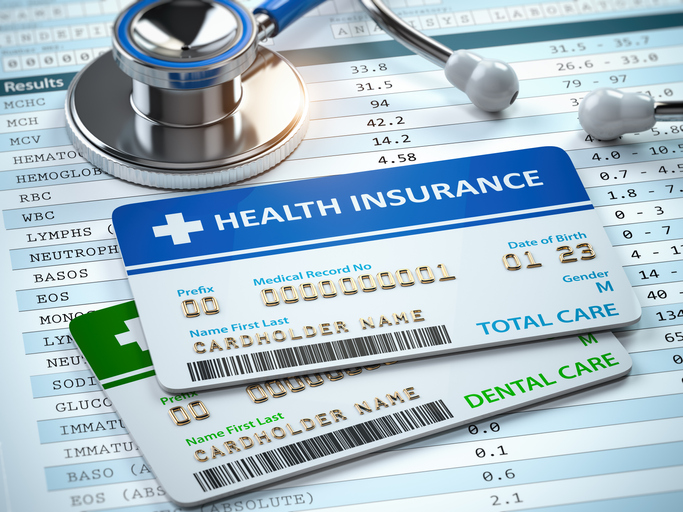Five Policies to Ensure Medicare Enrollees’ Access to Dental Care
The policies range from adding a new Medicare plan to offering a dental discount card in order to give Medicare beneficiaries access to dental care.

Source: Getty Images
- To resolve the lack of dental health plan coverage available for Medicare enrollees, the Kaiser Family Foundation (KFF) outlined five ways to improve seniors’ dental health plan options.
“Cost concerns and lack of dental coverage contribute to beneficiaries foregoing routine and other dental procedures,” the report explained. “Lack of dental care can exacerbate chronic medical conditions, such as diabetes and cardiovascular disease, contribute to delayed diagnosis of serious medical conditions, and lead to preventable complications that sometimes result in costly emergency room visits. As a result, there is ongoing interest in policy options to make dental care more affordable by broadening dental coverage for people on Medicare.”
About two out of three Medicare enrollees have no dental health plan, a separate KFF report from March 2019 discovered. Almost half of the Medicare population has not been to a dentist in a year or more.
Without access to dental healthcare coverage, patients experience high out-of-pocket costs. Of the Medicare enrollees without dental coverage and who obtained dental healthcare, 19 percent spent over $1,000 in dental care fees, according to the March KFF report.
Dental healthcare can be an overlooked aspect of healthcare that is influenced by a number of social determinants of health. Racially, economically, and geographically dental care disparities fall along clear lines. Higher socioeconomic status is generally linked to a higher likelihood of having access to dental health coverage, the March KFF report found.
READ MORE: Expanding Medicare Supplemental Benefits to Benefit Seniors
KFF proposed five potential solutions to ensuring that all Medicare enrollees can be covered under a dental health plan.
First, KFF suggested modifying Medicare Part B to include a dental healthcare benefit.
This would treat dental healthcare the same as outpatient care. Altering Part B is not a catch-all solution because the plan is optional and not all Medicare beneficiaries choose to enroll in Part B. In 2017, over 33 billion seniors enrolled in Medicare Part B out of the 38.6 billion Medicare enrollees.
Part B plan premiums adjust for income, with a higher premium tacked onto Part B beneficiaries with a higher income and Medicaid funding becoming available for those with lower income. Part B beneficiaries have an annual deductible, 20 percent coinsurance, and for some treatments there is no cost-sharing.
Second, policymakers could create a new, voluntary Medicare plan. An additional premium would be attached, just like in Medicare Part D. Beneficiaries would elect to enroll, so that those who cannot afford the additional premium would not be forced to take on a higher bill.
READ MORE: 70% of Employers Offer Packaged Health, Dental, Pharmacy Benefits
However, either altering Part B or creating a new Medicare plan would require several policy decisions which could complicate these approaches.
Third, instead of adding new elements to the Medicare system, policymakers could build on what is already present by expanding the terms by which dental care is considered medically necessary.
Under the current system, Medicare covers some dental care if the work is necessary or incidental to a procedure that is otherwise medically necessary. This proposal would relax those restrictions so that more dental healthcare procedures would fall under Medicare.
KFF also recommended using the Center for Medicare and Medicaid Innovation (CMMI) to try different dental healthcare models such as one testing whether dental healthcare lowers emergency room admission rates or comparing various cost-sharing payment models.
For example, in March 2019, CMS approved a section 1115 waiver for Maryland which, in part, intended to test a dental pilot program. The program sought to make up for the lack of non-emergency dental care for dual eligibles and covered diagnostic, preventive, and some restorative treatments as well as extractions.
READ MORE: CA Plans Medical Loss Ratio Guidelines for Dental Insurance Plans
Lastly, policymakers might also consider initiating a dental discount card which could help lower patients’ out-of-pocket costs.
This approach has precedent in the Part D plan. Before the Part D plan rolled out, beneficiaries under Parts A or B had the option to enroll in a Medicare Prescription Drug Discount Card program.
For the Part D discount card, sponsors were required to cover at least a single drug from the most popularly used Medicare prescriptions in the 209 drug classes. The card could cost no more than $30. If beneficiaries were living at 135 percent of the federal poverty level or less and for whom the card was their sole source of prescription drug spending funding, they were eligible to receive up to $600 in transitional assistance in addition to the drug card.
The dental card could be a permanent or transitional fixture of Medicare.
Lack of dental healthcare can lead to and increase the severity of chronic pain and chronic diseases like diabetes, KFF’s March report noted. While policymakers face many challenging issues this session, with prescription drug pricing proposals and healthcare cost reduction plans on the table, dental healthcare remains a priority.
